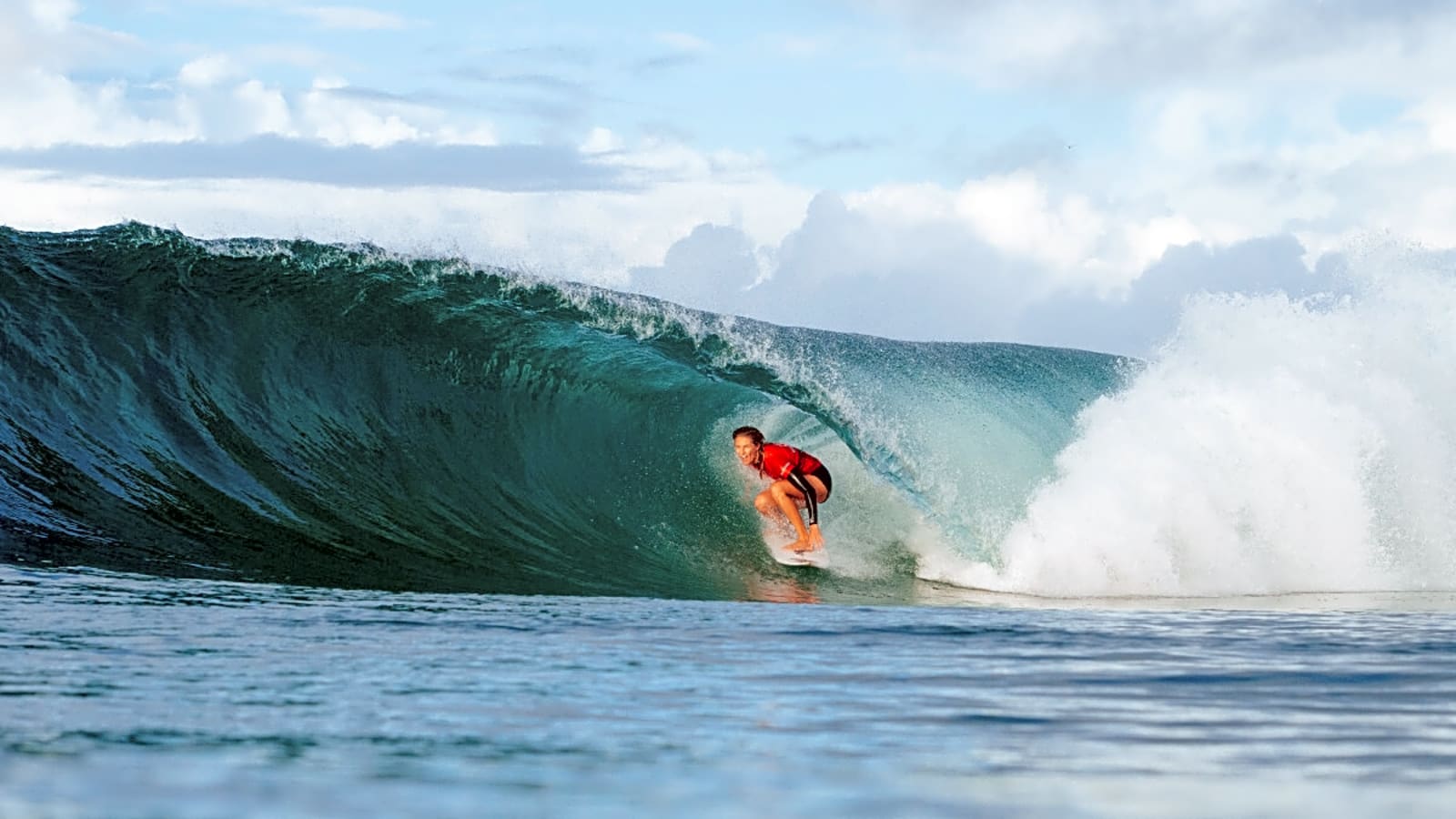
How would you feel if intimidation, systemic barriers, and everyday challenges stopped you from going, or enjoying, surfing? A study by The University of Sydney titled Waves of Change has found that's what many women face when trying to get barreled.
Now that could seem unlikely if you watched Isabella Nichols and Jack Robinson ring their Bells and raise their giant cardboard cheques aloft at the Rip Curl Pro. The Aussies each received $80,000 for winning the CT event, six years after the WSL introduced their equal prize money policy.
Yet while parity was a fundamental pillar of a move to equality in pro surfing, a study by the University of Sydney led by Dr Ece Kaye and Dr Leila Khanjaninejad found that in Australian surfing culture, there exist significant barriers that impede women's full participation and advancement in the sport.
In the professional surfing realm, despite the equal prize money, the paper identified other obstacles, including women having fewer slots and less support in competitions compared to men; and disparities in commercial opportunities, with male surfers still benefiting disproportionately from sponsorships and marketing.
The WSL had started to address some of those issues. In 2026, the size of the Women’s CT field will increase from 18 to 24, though still significantly less than the 36-field in the Men's.
“Ideally, you can just have that even spread of days that you’re watching men and women,” Sally Fitzgibbons recently told SURFER. “Instead of maybe one day of women and three days of men’s surfing. It just sort of evens out the ledger a little bit, and it looks like less of a side piece.”
The study also showed that women professional athletes faced systemic barriers such as having to juggle education and work, and surfing careers more than their male counterparts. That the winner, Bella Nichols, is currently studying an Engineering Degree, whilst going for a World Title, backs that thesis.
Away from elite competition, more cultural and systematic obstacles were stopping women from simply participating in the sport. These included aggressive behaviour in lineups, safety concerns, and intimidation both in the water and parking lots.
Citing a 2002 AusPlay participation survey, an estimated 196,000 Australians 15+ had taken up surfing since 2019, with more than 60% women. While that’s encouraging, the overall gender distribution of surfing in Australia stands at 72% men and 28% women. And while this research only covered Australia, the numbers would, you’d think, be reflected in most surfing nations.
The paper, however, wasn’t all doom and gloom and set about providing solutions on how those percentages can become more even. Some of the proposals included surf spot codes of conduct to combat intimidation, expanding mentorship programs linking experienced women surfers with newcomers and more female-focused teaching methods in surf lessons.
“Our research empowers everyday beachgoers and casual surfers to recognise their role in creating welcoming environments,” said Dr Khanjaninejad. “Challenging intimidating behaviour and highlighting how seemingly minor actions in the lineup can have major impacts on participation is key.” Or to put it another way, it’s time surfers started to call out other surfers who are being dicks.
The paper also highlighted significant leadership gaps, with few women in administrative, judging, and coaching positions. That has limited women’s influence on decision-making in surfing. Again, looking at Bells anecdotally, there wasn’t a woman coach on the Winki rocks and only one in the judges' booth.
It advises that pathways need to be created for women to enter positions across surfing organizations, competition judging, coaching roles, and industry administration. There also needs to be new dedicated funding streams for women's development programs across all states and territories in Australia. As ever, government funding will be crucial in creating the systems that help set up these pathways that, eventually, will help remove the institutional obstacles that have been in place for decades.
And so while the WSL’s equal pay policy has been an important and visual step, the researchers say a comprehensive approach is needed for genuine gender equity in the sport and in the line-up. In Australia, at least, the sport is currently a long way away from that.
More must-reads:
- All-Star appearances shine a spotlight on Pirates' incompetence
- Joey Logano still chasing trophies ahead of his 600th NASCAR start
- The 'No. 1 overall MLB Draft picks' quiz
Breaking News
Trending News
Customize Your Newsletter
 +
+
Get the latest news and rumors, customized to your favorite sports and teams. Emailed daily. Always free!








